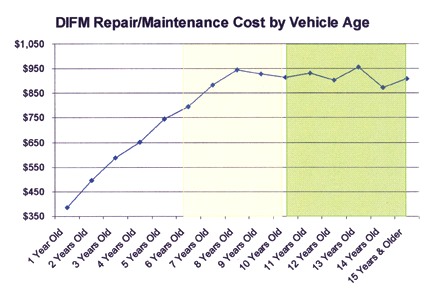What made Callaway Golf’s Big Bertha and the Prince tennis racket so successful in the marketplace? A larger sweet spot.
The sweet spot is the area on a club, racket, bat, etc., where a ball
is most effectively hit. A larger sweet spot allows you to hit the ball
with power even when conditions do not allow exact precision or
eye-hand coordination is not optimal.
In the automotive aftermarket, much is written about the service sweet spot being vehicles in the 6- to 10-year old range.
According to R.L. Polk, 29% of vehicles in
operation, or 71 million vehicles in total, are 6 to 10 years old and
nearly the same number are 1 to 5 years old. It makes sense that this
6- to 10-year range is attractive since these vehicles should be past
new car warranty and ready for some major service work.
According to IMR Inc.’s Continuing Consumer Auto Maintenance Tracking Study,
the following chart shows the average annual service dollars spent by
consumers based on the age of the vehicle. This chart clearly supports
the attractiveness of the 6- to 10-year range (in yellow), with an
average DIFM annual repair/maintenance cost of $889.
But what about the 101 million vehicles in the 11-year-and-older range
represented by the green box, with an average DIFM annual
repair/maintenance cost of $914? Is this chump change? I don’t think so.
We can’t lose sight of this huge section of the market. With an aging
vehicle population, this older segment of vehicles on the road
continues to grow year after year. And, with all the technological
advancements making cars and trucks of any age more difficult to repair
than in the past, the professional independent shop/engine builder is the “go to”
place for service.
If you set your sights on this larger sweet spot, you can’t miss.


Jeff Stankard is Publisher of Babcox Tech Group Publications.










